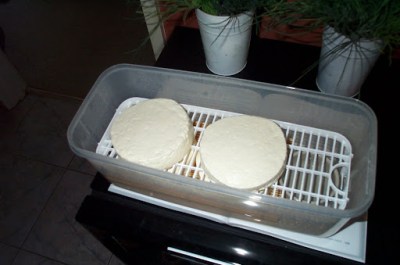This cheese was a fortuitous accident! By mistake I made a Bloomy Ricotta.
About seven weeks ago, I made normal whey ricotta from the leftover whey from two cheeses, Camembert and Queso Fresco.

The starter culture that I used for both was Sacco MO36R, and I added Penicillium Candidum to make the Camembert.
Once I finished making both the Camembert and Queso Fresco, I heated the remaining whey to 92°C (197.6°F) and recovered the Ricotta with 1/4 cup of apple cider vinegar. I drained using butter muslin, and added 2 teaspoons of salt to the cheese.
For those of you after the whey ricotta video tutorial; https://youtu.be/1fdYZ8T45JE
Anyway, it was too salty, so I left it in the kitchen fridge and forgot about it for 7 weeks until my wife found it and questioned me about it.
It appears that the whey still had enough P. Candidum left in it to breed in the conditions that I stored it. I kept the Ricotta in an airtight container in the kitchen fridge at 4°C (39.2°F).
Here’s the quick video I put together to show you this creation.
I believe that the additional salt helped preserve the cheese better for longer. Normally I would only add 1 teaspoon of salt to Ricotta made from 6 litres (1½ gal) of whey, but got distracted and over salted.
I am actually surprised that the P. Candidum imparted a lot of flavour into the cheese and somehow reduced the overall saltiness. It could be my tounge playing tricks on me, but this was certainly an improvement on the original Ricotta!
So all these little events led to the creation of my Bloomy Ricotta. Blooming marvelous I say!
If you are after supplies to recreate this cheese, please visit Little Green Workshops.








